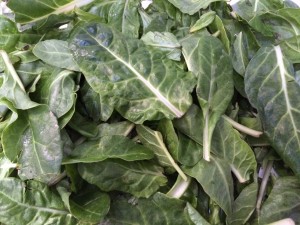March Monthly Morsels

The Superfood, Spinach
It seems that your mother may have been on to something when she told you to “eat your spinach” for dinner! Spinach is bursting with healthful properties including being an excellent source of a slew of vitamins and minerals. This delicate green is high in antioxidants, phytonutrients, vitamin K, vitamin A, iron, folate, potassium, magnesium, manganese, calcium, fiber, and the list goes on and on.
Spinach has a very high phytonutrient content with dozens of flavonoid compounds that act as anti-inflammatory and anti-cancer agents. The numerous antioxidants, together with the antioxidant vitamins E, A, and C help lower oxidative stress that comes from every day activities. These antioxidants decreases the risk of heart disease, stroke and high blood pressure.
Two additional antioxidants, lutein and zeaxanthin, are types of carotenoids that contribute to eye health. Spinach also contains anti-cancer properties in specific flavonoids called methylene dioxylflavonol. This substance had been found to slow down the cell division of cancer cells in the stomach as well as on the skin. Studies on spinach and cancer also provide strong evidence that spinach provides protection against prostate cancer.
Spinach provides a huge amount of potassium, at about 839 mg per cup. Just to compare, one cup of banana has about 539 mg of potassium. Potassium is beneficial for protecting against the loss of muscles and bones and also for heart health.
The Vitamin K found in spinach is also extremely beneficial for bone health. Although spinach contains high levels of iron, one should keep in mind that it is a nonheme form of iron, which means that your body is less efficient at absorbing this form as opposed to heme iron, the kind found in animal foods such as meat, and poultry. The folate in spinach is especially healthy for pregnant women who require folic acid in the early months of pregnancy to prevent neural tube defects.
There are three varieties of spinach; savoy which has curly, wrinkly and dark green leaves, semi-savoy which are less wrinkly and great for cooking, and flat-leaf spinach which is the smooth textured variety that is great raw because of its delicate flavor.
Try to incorporate spinach into your menus by sautéing it and adding into your omelets, using it as a base for chicken and fish, using it raw as a base for your salad, adding it to a wrap or soup, or even enjoying it sautéed on its own with some salt, pepper and lemon juice.
Here are two original recipes that you can use to get more spinach in your menus:
Spinach Stuffed Twice Baked Sweet Potato
Wilted Spinach Salad with Strawberries, Dates and Macadamia Nuts


Leave a Reply
Want to join the discussion?Feel free to contribute!